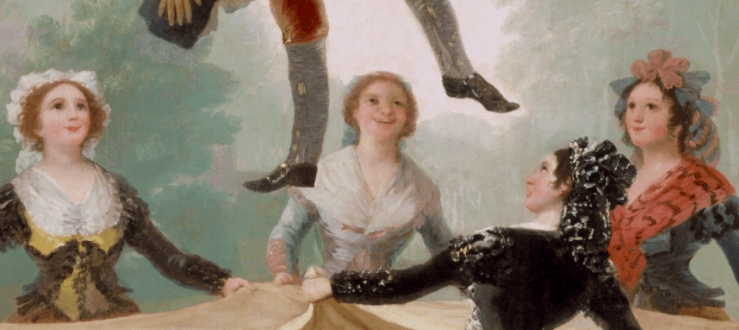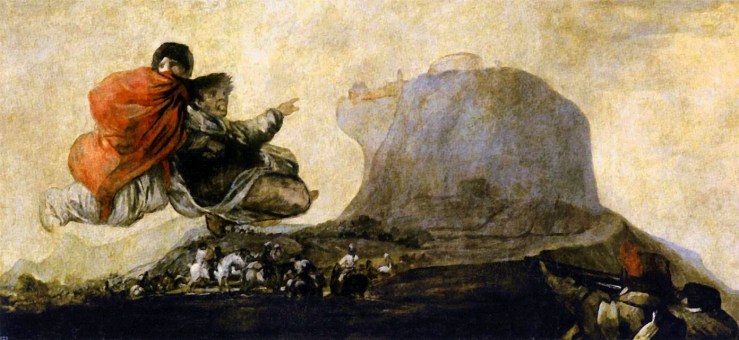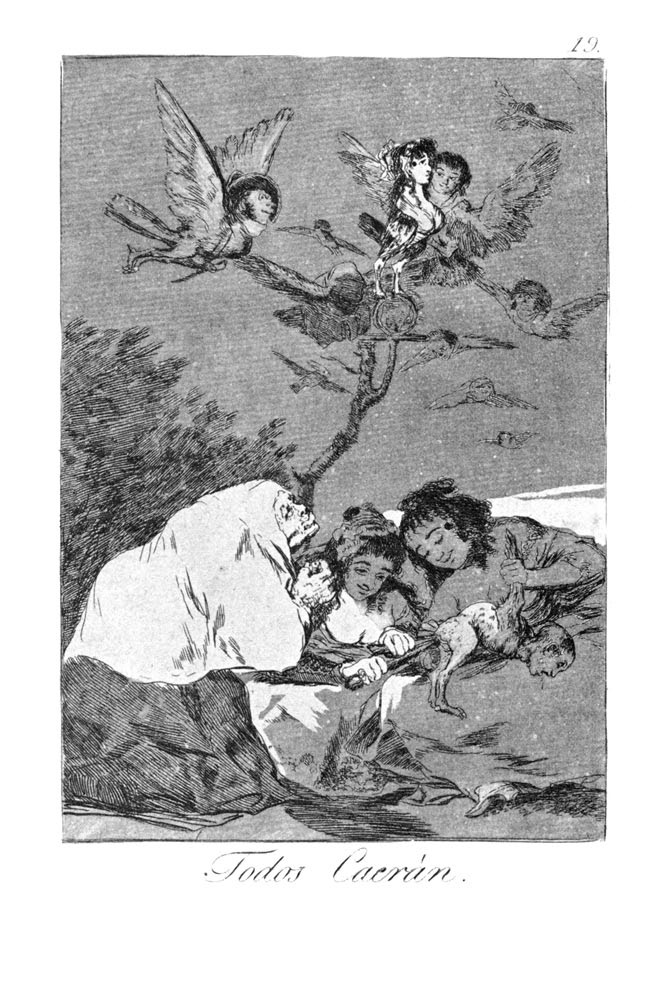
El pelele is a painting composed between 1791 and 1792 by the Spanish painter Francisco José de Goya y Lucientes (1746–1828). El pelele is often rendered in English as The Straw Manikin, but Robert Hughes translates it as The Straw Man in his 2003 biography Goya.
I like Hughes’s translation, which carries a perhaps-unnecessary connotation of a certain logical fallacy. Hughes pegs the painting as a genre piece, one of the “bucolic amusements” of Goya’s patrons Charles IV and Maria Luisa, King and Queen of Spain. The Museo Nacional del Prado in Madrid describes the painting like this:
Four young women laugh and play at blanket-tossing a doll or manikin in the air. The latter´s movement is the result of their caprice. Its carnival origins are visible in the use of masks and joking, but the blanket-tossing of a doll is used here by Goya as a clear allegory of women’s domination of men.

Hughes also sees The Straw Man as Goya’s take on “what seemed to him [Goya] the waning of traditional Spanish masculinity,” noting that the motif was repeated throughout Goya’s work (notably in Goya’s etching Disparate femenino).

Hughes perceives a “disenchanted edge” to Goya’s Straw Man. The edge here is what most engages me about the image. To this scene any contemporary viewer—by which I mean any post-postmodern viewer—must bring a certain horrific viewpoint. The free and freeing sky juxtaposes with the wobbly jelly limbs of the empty hero at the core of the painting. His face is a literal mask, a mask itself painted into a mock ebullience of servitude. The manikin is a big nothing painted as a happy something, a doll to be tossed around for amusement. The creeping fun under the whole business is undeniable. What’s key here, at least for me, is Goya’s composition of expression in the manikin’s face. Hughes points out that the figure is a mockery of the French court and all its foppish manners, Goya’s satirical jab at his benefactors’ pretensions — “silly French pigtails and spots of rouge on its cheeks…vacuous to perfection” — but there’s also a strange humanity to the face that I don’t think a contemporary viewer should overlook. The eyes assert themselves to the grayblue Spanish heaven above, even as the body fails to resemble all but the idea of a body—an idea most heavily felt in the body’s own gravity, the force which will return it to be tossed again and again—without hope of transcendence.





































































































